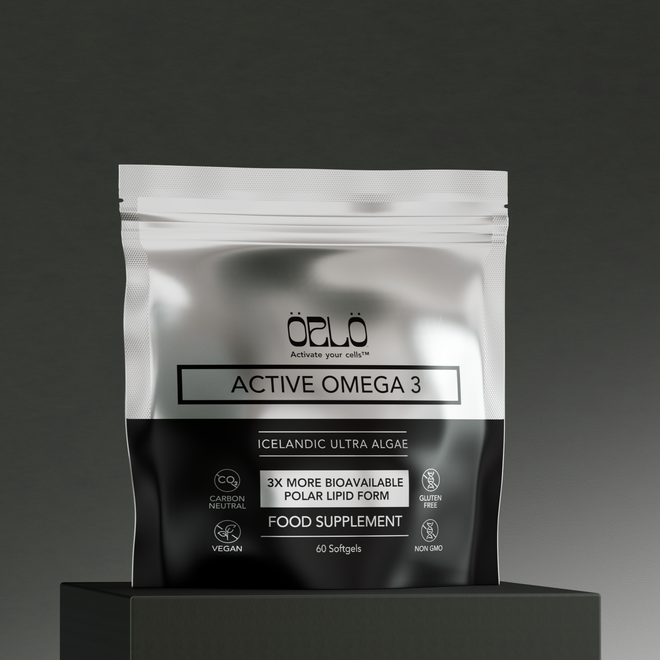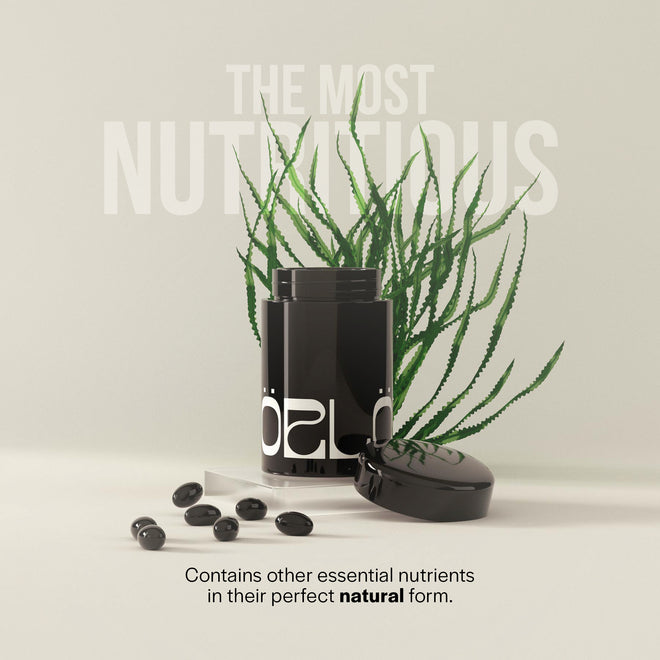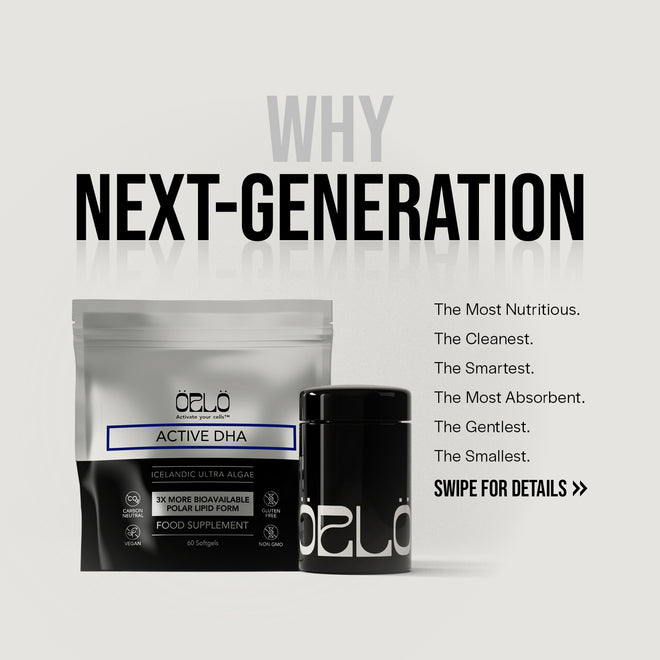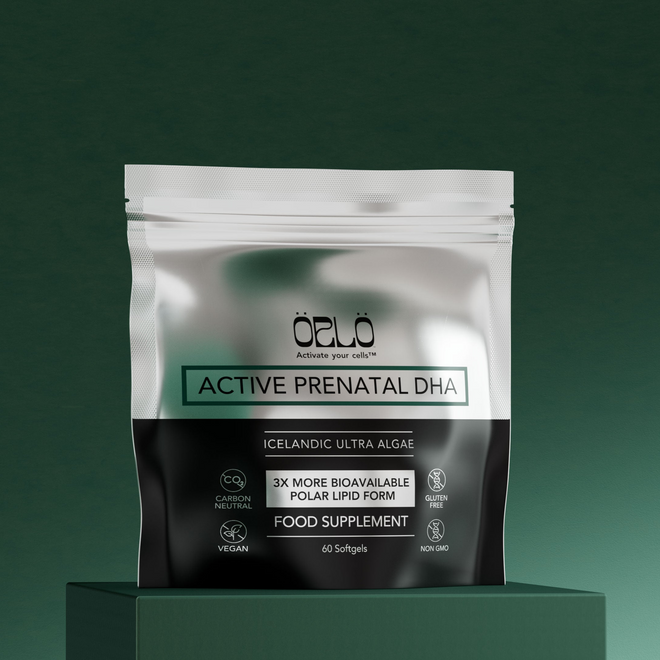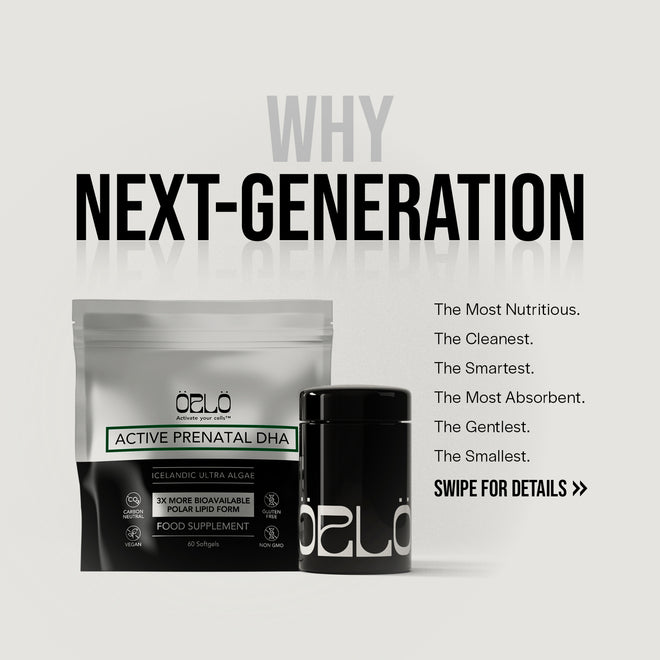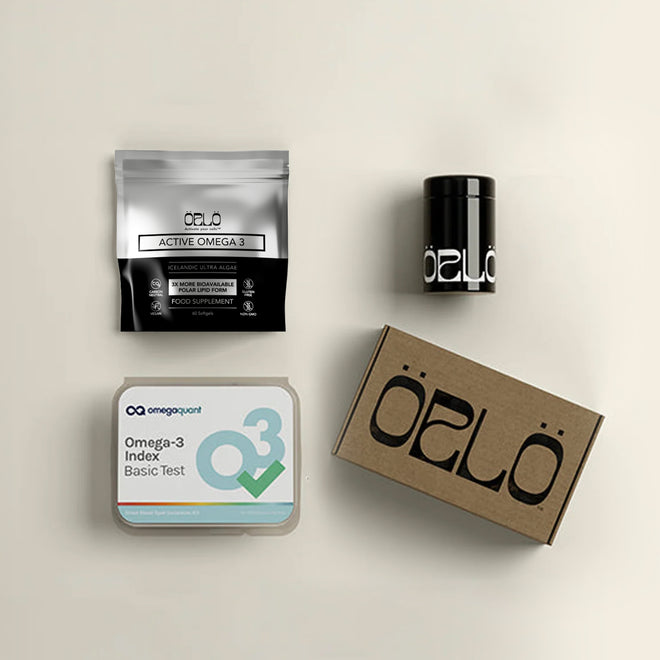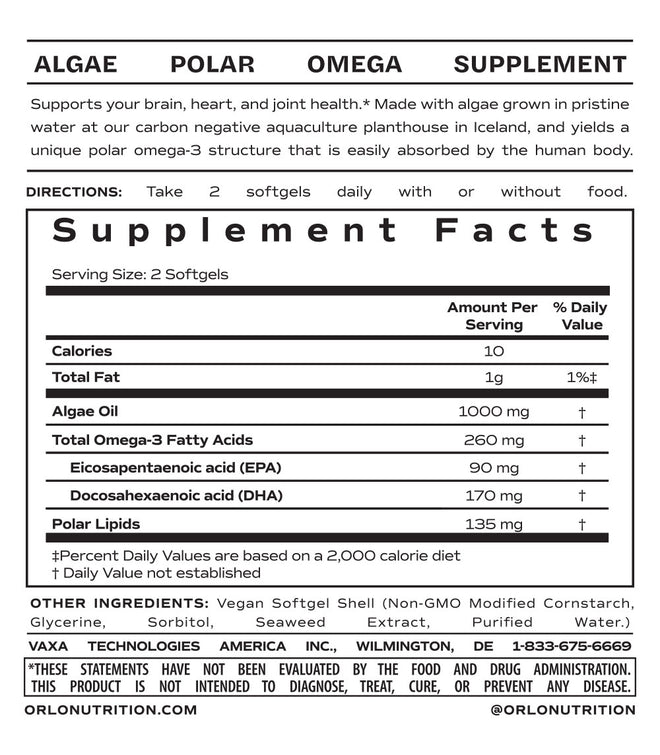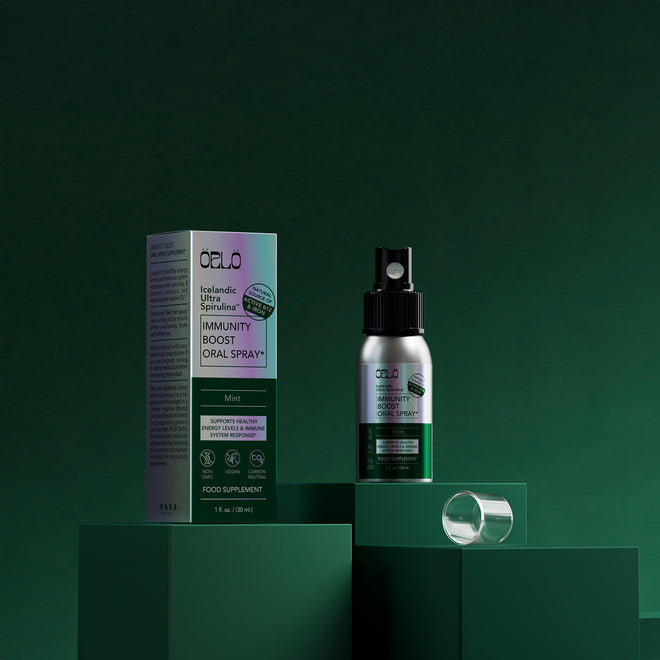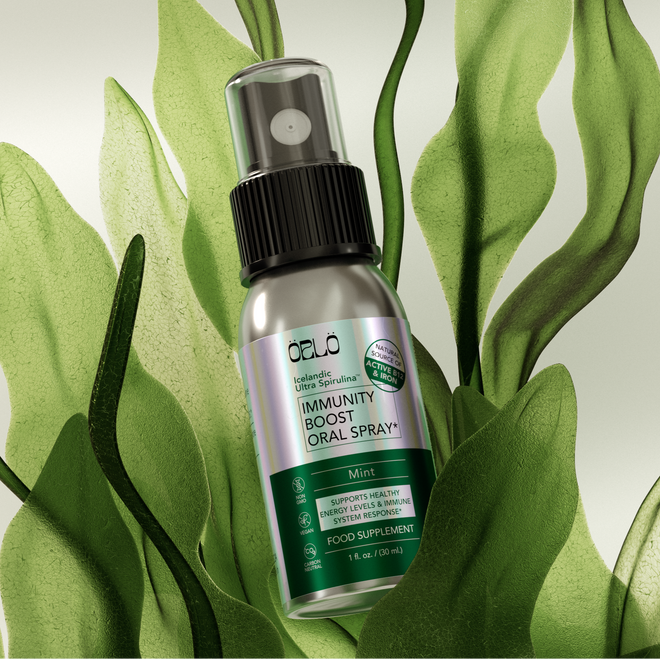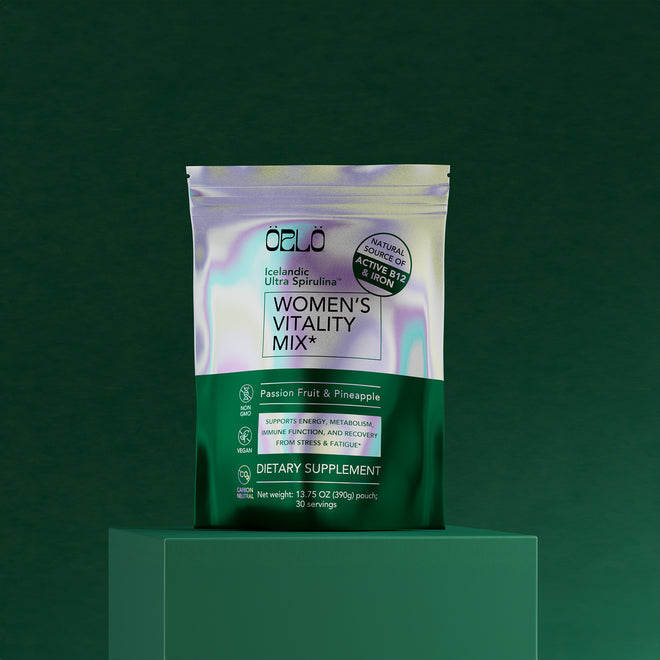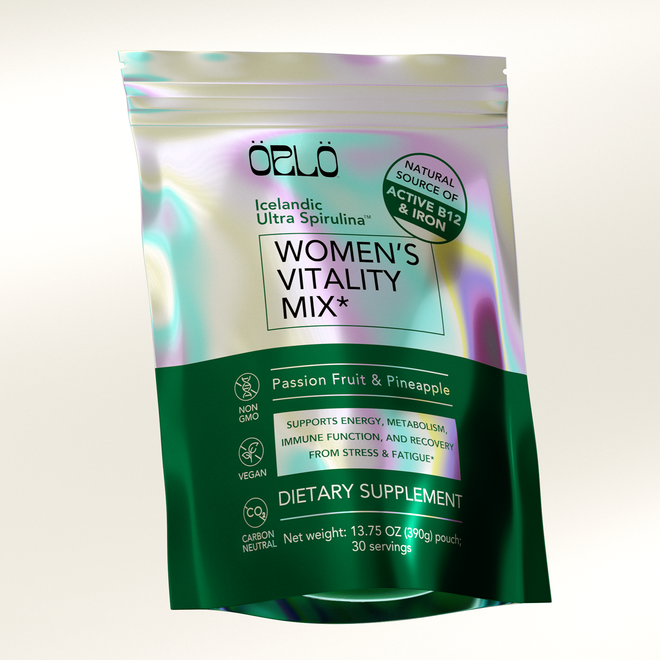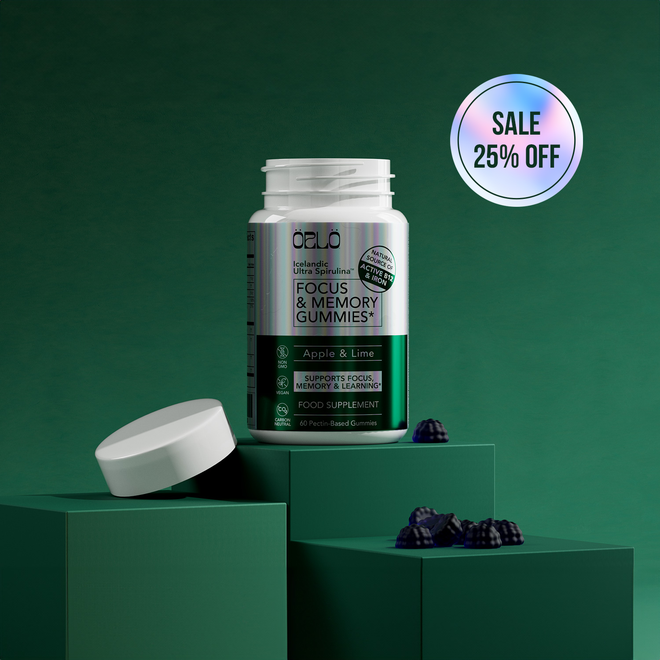Free shipping on purchases over $69
Nourish America With A Basic Food Utility Featuring Jens Molbak, NewImpact.Care
Watch the episode here
Basic food utilities can actually be used to fix a big problem that’s affecting the United States today, food insecurity. Did you know that one in seven people in the United States is food insecure? Healthy and nutritious food are too expensive, so they go to their nearest fast food joint instead. And as medical bills continue to come, it's hard to sustain this kind of lifestyle. Plus, it's just not healthy.
What if there was a way you could get healthy foods for free? Jens Molbak, the CEO and Founder of New Impact, is on a mission to do just that. Jens is developing a Universal Basic Food program where people can vote on a set of healthy foods, order it online, and pick it up at their nearest marketplace. Although it's still a work in progress, Jens is adamant about finishing this app so people can start living healthy. Join Jens as he shares a demo preview with Corinna Bellizzi. He goes into the process and how the business model even works. Discover how New Impact is trying to fight the food insecurity problem in the United States.
Key takeaways from this episode:
- Food insecurity in the United States is a huge problem
- Basic food utilities are your friends
- The Universal Basic Food Program can give you nutritious food for free
- The program is on its way but will still need a lot of help in testing
- Healthy food equals a happy life
---
Nourish America With A Basic Food Utility Featuring Jens Molbak, NewImpact.Care
We have seen significant rises in food costs and even food shortages around the globe. 1 in 7 people in the United States is even considered food insecure. How can we tackle this big issue to ensure that people around the globe can get access to great nutrition without compromise, without further damaging our Earth's precious ecosystems? What can be done to nourish America while also replenishing food systems and regenerating our soils?
To unravel this story, I am joined by Jens Molbak. Jens seeks to create a world where social and economic progress is available to everyone. He is the Founder of New Impact, a humanity-benefit nonprofit that seeks to utilize a data-driven tri-sector approach to align the resources available in the private, social, and public sectors to generate superior societal and financial outcomes for people. Jens first learned of the potential for tri-sector solutions when he cofounded Coinstar in 1990, a company that benefited the private, public, and nonprofit sectors simultaneously. He holds an MBA from Stanford University and a BA from Yale University. Jens, welcome to the show.
Good morning. Good to see you again.
I'm dealing with the realities of our COVID life these days, and each time my child gets sick, they have to stay home from school. I think a lot about the impact that we have in our daily lives when it comes to people that are food insecure, that can't get the proper nutrition, and that are therefore more at risk for something as debilitating as something like COVID. I'm curious about what this path has meant to you, how you landed here trying to solve this big problem, and how this particular perspective, this trifecta, can help us to do that.
Thanks for the introduction, Corinna. I have been looking forward to chatting with you about this one particular solution. At New Impact, we think about ourselves as business model innovators, where I'm in a public charity, 501(c)(3). We encourage organizations to think about solving problems using the best resources available, whether from private sector companies, the social sector, nonprofits or the government.
We think it's important that we use a whole of society approach and our best resources out there to be applied to big problems. This question of food insecurity is huge. As you mentioned in your intro, 1 in 7 people in the US alone is food insecure. When you look at the system overall, roughly 40% of the food that manufacturers waste has huge implications for cost and climate.
When you go even a little bit further into it, you will find that only between 10% and 20% of the food that's produced gets into somebody's stomach. As efficient as our food system is perceived to be, we can walk into many supermarkets and food stores and see an abundance of food on the shelves. That masks a lot of underlying market failures in the food system that shows up in our daily lives in terms of people who don't have access to or have bad nutrition, and importantly, long-term substantial healthcare costs. In many ways, the healthcare costs to a food system that's less than optimal or huge. I'm happy to dive in, talk about, and share with people about this particular project we have been working on.
The rising healthcare costs are not going away anytime soon. If you average all money spent on healthcare by Americans, it is nearly $1,000 per capita per month, which is a huge amount. If you were to ask people, “Do you have $1,000 a month to spend on healthcare?” most of them are going to say, “Absolutely not. If I did, I would rather spend it on something else.”
The reality is people don't like to talk about it but in the US as a country, we have a fair bit of obesity, either a little bit of overweight or a lot of overweight. Our food system feeds into part of that problem of people do not necessarily make the best choices for the body. Why is that? We've got a big food system. It's not driving great health outcomes individually in people's lives. Those health outcomes are super expensive, and the food is expensive. A lot of it gets wasted, and not everybody gets access. There's room for improvement in terms of how the food system works in the US and beyond for sure.
One in seven people in the U.S. alone is food insecure. Around 40% of the food that is manufactured is actually wasted.
When we connected in my earlier interview with you on Care More Be Better, another show that I host, we talked about this public utility concept that you are working to unfold in Colorado. I would love for you to talk more about that. How can we use this type of system, a more public utility approach to change this and ultimately erase or eradicate food insecurity?
I'm excited to talk with you about this. For background, we were asked by the Morgridge Family Foundation, based in Denver, to work with a local, innovative food bank called Metro Caring to look at this question of food insecurity. They had gotten interested in the work of a Professor named John Ikerd, who’s been writing about his agricultural economist. He has been suggesting that this concept of using a utility mechanism for food might be worthwhile.
If you think back to utilities in the US, we used utility mechanisms for clean water to bring water to people. We used utility mechanisms to bring power and electrification to rural areas. Utilities are this interesting quasi-public entity that has some unique aspects that allow a lot of people to get access. He had been writing for years about this idea of a food utility but hadn't done the deeper work in terms of what a business model might look like.
The Morgridge Family Foundation asked New Impact to advise them, along with Metro Caring to look at what we could possibly do to create a public food utility that could start addressing some of these market failures. We dove into the project with a lot of enthusiasm and curiosity about what this might look like. What we found was enormous potential. As I walk through this, I want to be upfront that the idea started small, and it got to be big and transformative in terms of its power.
We are going to talk about a lot of things. There are 100 reasons why this needs to get tested. There are lots of assumptions and holes to be poked at out there but what's exciting is we are moving into Phase 2. We are initiating our first pilot test, and the Colorado Food Cluster has gotten interested in this. There can be testing some elements of this.
We have a meeting in Denver for our initial kickoff meeting, which I'm looking forward to. We are hopeful that we can get a number of pilots stood up around the country to start to explore different elements of what this public food utility might look like. Maybe let me give you some background in terms of what we are thinking about when we talk about the utility of food.
Before you do, let me ask a question. The skeptics that might be reading could say, “This sounds like socialism.” Yet we subsidize corn, wheat, potatoes, and all sorts of foods, which could sound like socialism. Before we even begin deepening into this discussion, what would you say to that person? What are you trying to do here?
It's a great question because not only have I been called socialist. I have been called a communist. I want to assure everybody that I'm a capitalist, and I believe in capitalism a lot. I spent most of my life in the private sector, and capitalism works great in many aspects. As we lean into this concept of a public food utility, I want to assure you that there are market forces involved here.
We are interested because we think it can pay for itself outside of tax dollars. We think this can be a self-funding mechanism for food that addresses food insecurity, health, and climate at a large level, and it's funded by data. We will get into what that looks like. We have a ton of information on our website, NewImpact.care. If people who go to our catalyst projects, they can click on the community food utility piece. They will go into a share page.

There are easily 10 to 20 hours of reading on there in terms of the project. Everything we do is a public good, so people can dive into it. As we go through this conversation, some of the things we talk about like Universal Basic Food, are going to sound like crazy concepts. I would encourage people to hang with us, hold the questions, and lean into what the possibility is. As we have been working on this for more than a year, we have been like, “This could be a big deal.” There are lots of questions out there and reasons to be skeptical but there are also many more reasons to be optimistic.
I will do my best to harness my skeptic’s hat so I can help tell that story with you.
Keep the skeptic’s hat on. We are deep skeptics. We try to ask ourselves a lot of questions. In fact, on that website, we have a top ten list of questions. We lay out what the concept is. We have some assumptions out there and a top ten list of questions that could be researched or explored in a pilot. That's what we are going to start to do in Phase 2 in Colorado.
We are going to pick off 2 or 3 of those questions and start to explore that. We hope to get a number of pilots going and have people share, “Here's what worked well in Colorado. Here's something else that got maybe tested in West Virginia or Texas. How can we learn this together?” If we are right and there's something here, this is a complete game changer.
I have been frustrated by a lot of the programs that do exist for food for people who are food insecure. You rely so much on canned goods, grains, big sacks of rice or a giant bag of onions that I've seen given away to people struggling with food insecurity. I'm thinking, “What are they going to do with that giant bag of onions? How is the food that can nourish them?” I would love for you to talk a little bit about how this whole system can work and how we can get healthy whole foods into the hands of people that need them most.
We did a lot of interviews. We talked to probably our 40 or 50 experts throughout the food system, both on the for-profit, not-for-profit, and public sector sides. We ended up interviewing a lot of people who were food insecure. We were particularly looking initially at the charitable food and the food rescue model. A lot of food banks will get their food from supermarkets or restaurants where there's extra food, access to food or waste.
That food can be picked up from the back of the supermarket, taken to the charity, and then that food is available in a food bank. The charities will also buy food directly from a variety of systems. There's a big complicated food rescue charitable food network out there but it is shockingly and efficient. There are a lot of problems. For instance, one of the things we found is that if you are a supermarket and donating food, your tax break is based upon weight.
Your incented to donate a 2-liter bottle of soda because it weighs a lot as opposed to a bundle of carrots or something that might be more nutritious. That's the way the system got set up. Even the tax incentives aren't great for it. If you look at the life of someone who is food insecure, it's complicated. We talked to a lot of shoppers and one, in particular, said, “I have to go to the food bank to get certain types of food on this day of the week. I have mapped out all my local supermarkets. I know that this chain has a discount on X food on Tuesdays, and Y chain has a discount on different foods on different days.”
I show up before 10:00 AM and this particular store because the sprinklers go off at 10:00 AM, and I don't want to pay extra for the weight of the food. All this effort goes into trying to get fresh, healthy, desired food. It’s tricky. The other thing that became clear is that the food system, in a sense, has been captured by the suppliers. They've done a great job creating food that we want to eat. Essentially, our mouths or our brains have been hacked to eat food. We call it the Doritos problem.
What would the world look like if every person had healthy, desired food in their stomach three times a day? A lot better.
You see engineered foods that have that perfect balance of salt, sugar, and fat.
That's not necessarily the best thing for you. We started asking ourselves a big question, which is, “What would the world look like if every person had healthier, nutritious, desired food in their stomach three times a day?” We will talk about how we get there but if you could make that happen, what are the large benefits? The benefits of that are large. Lots of long-term health benefits could save the system a lot.
It's less expensive to eat at Taco Bell than it is to eat nutritious food. That's essentially what we've come to.
The average American family spends around $5,000 on food a year. Half of that is food at home, which is prepared food. Roughly half of that is food that's eaten out fast food or whatever the restaurant type things out there. There's a whole set of questions around prepared food at home versus food that’s on the go. As we started thinking through what a system could look like, we were looking at this question, “What's it like if you look at the SNAP Program or the WIC Programs? They essentially give money to people to buy more food.” As we looked at the food system too, not only is it captured in terms of taste but there are tremendous costs in the food system.
You think about all the branding, advertising, packaging, shipping, and transportation. If you think about a dollar, the actual cost of the food itself is a lot less, depending on the product, than the entire piece of it. We reduce the cost of the food if we could get it down to its simplest piece and take some of that out of there. We started to postulate the idea of what we call Universal Basic Food.
Universal basic income has been a concept that has been put out for a long time but we said, “What would it be for a community?” Let's think about something like Denver County, a geographic area that had access to Universal Basic Food that was free. We can talk about the selection process. Let's say the community had selected 100 items in common that were high quality, nutritious, and desired, available in a subset of local supermarkets and other retail depots for free. What would that look like? Would that be powerful for people to be able to access that?
You wouldn't have to go to the charity bank. You wouldn't have to go through a SNAP Program. You could get free food. It's a radical idea out there but we started thinking, “There's a lot of power that could be an outcome.” When we think about public utility, one of the first things we think it could offer to the community is the concept of Universal Basic Food. Let's stop and talk about that for a moment. How would that work?
We think there could be a voting mechanism that utility runs. It says, “We want brown eggs or asparagus in our community.” You have to have culturally relevant food. There are a bunch of nuances around that. Let's say a group of people in an area could select 100 items that would be available throughout the year. There could be standards set around that. It could be locally sourced, and this isn't low-cost, low-quality government cheese. This is a high-quality food that everybody would want to eat. What could that look like? That's the first function we think a community food utility could look like.
People want choice. We think that there are many other items to buy out there. A public utility could also offer discounted foods and coupons, so they could buy other types of foods they wanted to supplement those things. We realized there's so much data in the food system. If the utility could have the data for the users and aggregate the demand of what we all want as people, then there's a chance for the suppliers, producers, and retailers to feed what people want. We got interested in the idea of aggregating the demand for food in an area to make it helpful to people out there.

Those are the basics of what we are talking about. There would be an app that they would have available so they could order their Universal Basic Food, go pick it up at the store who will get into the contract with the retailers, and they would be able to get discounts. There would be some other components on the app that would allow them cooking classes and ideas with that. This could be a powerful way for them to get this coming together. I can show you a little app and demo how this would work. We can talk about how we would make this function as a viable business model that pays for itself.
That would be interesting. Let's give that a whirl, and I will do my best also to help you describe this for people reading.
In addition, we have a little demo on our website, so people can watch that go through but it would help bring it to life. It's going to raise questions like, “How do we do this?” We will get into that but let's set the stage. If you can imagine an end state where this is the case, the question is, “If we like this, how would we get there?”
Let's say you were in Denver. There was this thing called the Denver County Community Food Utility, to which everyone in the county belonged to. It's geographically based and is essentially the trusted friend and advisor for food for everybody living in the county. You could open up your phone, and you could say, “Welcome to Universal Basic Food and other services, and you can get great food for free.” You could then log in and see a variety of services that the public utility would offer to you.
We have been talking about the UBF or the Universal Basic Food offering. That's the primary piece but you could also get tips on cooking ideas, recipes, and nutrition advice about preparing that food. There could be some social media aspects to it. You could also get discounted food. Coupons and whatnot could be available at any retailer.
With the data behind this, that the utility could not only pay for this program but might even be able to generate positive cashflow on a profit and create a monthly cash payment or a dividend. There could be other social services or government services available, a profile, and a QR code. If you want to order some food, you could simply go to the app and say, “I'm interested in ordering some food. I might want some eggs.”
In this case, part of the 100 items might be organic brown eggs, and you could simply add them to your cart. You might choose to get some apples at the store. You can add those to your cart. You might opt for, let's say, some spinach and add that to the cart. You might choose to have some beef because the community has selected beef. You can add that to the cart. You can take a peek at your cart and see that you've ordered 2 dozen eggs, 4 apples, a pound of beef, and some spinach. You can select where this would be available.
Here is a major supermarket, which would be part of the network, a local non-profit, and a city bodega. Importantly, this program would not be available at all retailers. The retailers would compete for the contract to deliver this UBF food to end users and pay the utility for the right to deliver this food. We think roughly 1 in 5 stores of the existing stores out there would have the ability to be a partner with the utility and deliver this food for people.
Part of the stipulation would make sure that these food depots would be available within ten minutes of public transportation throughout the entire county. You could start to solve food deserts. You could say, “I've ordered this food,” go to the store and you select the next day, pick up the items right off the shelf, scan your QR code, and buy other products from your store.
Universal Basic Food will be available to all residents regardless of income. It's about making high-quality, nutritious food that would appeal to as many people as possible.
It would be a tremendous competitive advantage for the retailers who had bought into the program to get people coming in for these 300 items because there are 10,000 other items for sale in the store, and they could have a lot of extra traffic doing that. You could submit that piece, and it would thank you for the order. It would tell you that you could come down and pick up the food the next day. It would tell you the aisle and location to make it easy to shop. That's the basics of what would happen. Are there any questions about how that could work before I show you some other elements of this?
Some of the criticism that could come up is a question of fairness. This is something that I tackled on my other show, as well as I met with Ethan Welty, who's the Cofounder of a company that also got its start in Colorado called FallingFruit.org. They were ultimately cataloging fruit trees in their neighborhoods. When they come into fruit and therefore ready to pick, to make that information available to entire communities around the globe.
What they confronted from time to time was the question of whether it was fair that somebody could go and harvest all this fruit and then somebody else in the community might not have access. You are tackling this in one phase by saying, “This could be available to everybody.” Yet, how do we erase the stigma associated with that the same way that we see something from a WIC Program or something like SNAP that is government funded and has this negative association around it?
We heard a lot about stigma. Part of the stigma answer and the fairness answer is this UBF program would be available to all residents regardless of income. If you are the wealthiest person or the poorest person in the county, everybody has the right to this Universal Basic Food. There is no stigma attached to this. By bringing in people of higher income, we would want to make sure the food was of the highest quality.
Think about this as a high-quality and highly nutritious food that would appeal to many people throughout the county. Instead of focusing on low-quality food for low-income people, this is high-quality, nutritious food for all. It’s truly universal. That's part of the way that we are thinking about this fairness question. We get the question, “What if someone takes more than their fair share or if you end up buying ten times as many apples as you need and then sell them on eBay?”
That's the prevention of fraud, essentially, how this product or service is intended to work. There are always going to be those that work to take advantage of it.
Imagine you are born, and there's a different program for young kids and babies which we can get into. Essentially, if you knew for the rest of your life that you had access to UBF food and could save $5,000 a year, this would be a huge, powerful, and valuable program that some retailers and manufacturers would be able to do.
Importantly, the utility would run this voting mechanism and say, “We, in Denver County, want organic brown eggs,” They would work with a contract with the retailers. The retailers would bid, and there are 4 or 5 major retailers out there and be a winning group that would do it. They, in turn, would contract with the suppliers to say, “We want organic brown eggs. We don't want it branded. We don't want all the different types of packaging. We want to bulk. Here are these things that are out there.” They would put the information out into the supplier network and be able to supply that right.
There's no branding or advertising. All of this is non-branded, essentially private labeled to the utility. A lot of the waste is driven by the fact that no one has a bird's eye view of all the dated information. No store wants to be out of stock of everything. People overorder the basil and throw some away, which drives an incredible amount of waste. Yet, if we can aggregate the demand of everyone in the county to say, “This is how many eggs we are looking for,” you have a market mechanism that you can send to the suppliers and retailers to say, “This is what we want.”

One of the things we often hear on the supply side is people have contracts. They can't figure things out. The demand goes all around. This idea that we've aggregated consumer demand for food in a central utility or organization that represents the consumer's interest is powerful. By aggregating the data with this stuff, that's what drives the economic value out there.
I could also see the benefit of not making it a private labeled situation where brands might want to get involved in something like this, stake their claim and say, “This is important to me. We believe in what you are doing. Therefore, we look at this as a sampling effort. People are going to get to try the products that we've spent all this money producing and bringing to market. We want that differentiation.” What would you say to that?
It's a great segue. Let me show you the next part of this piece. Importantly, this Universal Basic Food would only cover roughly 100 items, and those 100 items would not only have to be voted on by the community but would also have to pass a nutrition group. The idea is that if you only ate those 100 items, this would be the freshest, healthiest balance set of nutrition available to you for free. We think it's for free because we want to give consumers a big enough incentive to say, “This is the type of stuff that we want to put into our body.” People are going to want to buy other stuff.
Let's take a look at the brands. You mentioned brands. There can be discounted food here for other brands. Let's say you wanted to buy Bounty paper towels, Amy's organic beans or spaghetti that's available either at the existing retailers who are part of the utility program or at the non-utility program retailers. This is essentially a way for these brands and the retailers to advertise and promote as they do now. There are tons of coupons that go out through Sunday newspapers and the FSI coupons. There are tons of advertising online, and people would be able to select, shop, and save money on these other products and brands out there.
By building that in, theoretically, a company could choose to offer a smaller size of something for free, and it's 100% discount and limit one per customer or something to that effect.
If you think about the data of advertising in the modern world, as consumers, everybody talks about, “We are all targeted down to this customized, personalized stuff.” By being so targeted, consumers have lost all their power. I am an individual choice of one. If the utility can aggregate all the shopping information from those consumers because part of the price of admissions of the utility is the retailer would have to share the data in terms of what’s people are buying that's in there. The utility can go off to the brands and say, “If you want to advertise this type of cooking oil, salty snacks or thing, we will run your advertising. You are going to pay us the utility to do this.” The consumer is going to get the benefit.
If you think about Google, Amazon, or Facebook, we, as customers and people, are the products, and we are being sold. If we can reverse that and say, “We want to get the benefit of this. We are going to show up. You can advertise to us but you are going to pay us for the right to advertise to us as opposed to the company.” This is where this utility becomes powerful because the utility is designed to have a monopoly. That's why they exist out there. Essentially, excess profit of the utility could generate from this. It can be shared as essentially as a dividend. This is a modern form of a co-op or commons that’s based on data.
I know people who are PhDs, public health, and things along these lines. I tend to question why they haven't come up with the idea that could be as transformative as this with all their work and frustration over the years. Many of them have essentially come to say, “Part of the reason we have a health problem in this country is that people don't have access to a balanced diet.”
That's a controversial statement because you would say, “Everybody has a right to go out there and buy food.” When their food might be 40% or 50% of their income, or even more, in some cases, that becomes increasingly difficult. It can also create a situation where people can't afford to both keep food on their plate and a roof over their head and then, therefore, the trend to live in their vehicles and end up on the street.
A utility is designed to have a monopoly. That's why they exist out there.
I want to talk about this not because all problems can be solved by this one thing but because it relates to health. It also relates to this other subject, which is getting that right nutrition. In many cases, it's too expensive to get all the right nutrition and then also supplement where you are weak. Even considering whether something this can pass through legislation, come through the environment, and be in the public sector, how would you advise them to think about this, get involved, and engage? What can they do?
There's a lot here. I keep referring to our website but we have extensive information. We have a white paper that describes the concept. We also have a PowerPoint deck. On slide 29 of the PowerPoint deck, we've got the top 10 things to test here. It's a radical idea. It's a transformative idea. It sounds insane. Even when we were coming up with it, we were like. “Does this make sense?” The more we've leaned into it, we think it really does.
Like we are doing in Colorado, we have a pilot getting stood up in one area. We think it would be interesting in other regions around the country to find a retailer who might be interested in this. The retailers who get this are going to dramatically win competitively over their fellow retailers to find more food banks, foundations, and public health officials who are interested in this.
We had a fascinating conversation with Denver Health, the largest health entity in Denver. They were saying they were having kids, showing up already with all these problems. They were trying to say, “How can we deal with this?” We are like, “Deal with it. What if you solve the problem upstream? You had those kids getting access to fresh, healthy, nutritious food from the get-go. How much could that save in the system?” The answer is a lot.
Once you start to think through what a more efficient food system would be, it's good for people and good for energy. It makes our food system way more efficient. It could pay for itself. It would be good for the climate. The biggest benefit we found was the long-term healthcare costs and savings. That's a long tail that takes years and years to show up. This concept of free Universal Basic Food for 100 items, not everything, with choice and brand on top of that, and backed up by this community data commons solves a lot of problems.
Have there been conversations about including something like a general supplement, a multivitamin, or an Omega-3 in this space?
It would make a lot of sense for vitamins to be included in this. Plus, the idea of balancing the nutrition, nutraceuticals, and the right balance of food. It has an education component as well. Back in the app, I could show you a couple of the things that were interesting. The nonprofit sector has strong resources around cooking, cooking classes, cooking ideas, and nutrition training. Part of the idea of that app is we could bring that information to people right on their phones, right in their homes.
We think of the social element. People like to share recipes, ideas, and tips. If you've got the following ten types of items available in your county, here are different ways to combine them. There are lots of ethnic and cultural needs for food. We've looked at the quadratic voting systems to make sure that everyone's voice is heard and that choice is maintained. Importantly, this becomes dramatically equitable food access and hopefully reduces the stigma around it.
It would also be important to balance that with some critical information from the public health sector. You need to make sure that you are hitting these core nutrition points to ensure that you are covering your bases and supporting someone who, let's say, doesn't eat meat and they are still able to get a good protein right as part of the program.

Let me show you a couple of other things, and then I will stop with the app demo. If you did have an app like this, though, that’s being run by utility, we think we could generate cash. You could have an income that comes out of this, which could be quite interesting. There could be other services, access to housing, jobs, childcare, transportation, and importantly, an emergency food supply backed up by the utility as well.
One of the interesting models that we looked at was internationally in Switzerland. The country keeps seven years of emergency food supply in the system and supermarkets, which is clever. When we were doing this, Texas had been hit by the ice storms, and the supply chain was shut down. We were like, “It would be interesting. Could a utility not only provide discounted food, Universal Basic Food, cash, and data commons but also be a backup system in terms of wildfires, floods or snowstorms? We think there's an element that’s in there as well.
Those are the five components of the utility, the Universal Basic Food, the discount at the piece, the cash dividends, the emergency food supply, and what powers it all, which is so important, is this notion of aggregated consumer data. On a personal note, when I look at what's happened to our data as consumers over the last several years in this country, data is a new oil of the 21st century.
We've allowed our data to essentially become the right and property of other people. Property rights became a big deal for us individually, as people, so we could own land and those things. The data rights are important, too. This community, data commons, run by a public utility, could be a powerful way to pay for all of this stuff, give some power to people, and have the system serve people as opposed to being fractionalized.
Are we talking about census data here or data that's captured from cell phones?
The data that we are talking about is the food purchase data. If you are the consumer and you opt into the utility, if you want to be part of this, you could say, “Utility, it's okay for me to share my data with you, the utility, the water utility or the power utility. You can't sell it to anybody but go off, represent me and all my other fellow residents and citizens, and get me the best deals based on the stuff that I like to buy.” I have a Danish background. I like herring, which is my cultural food.
It's hard for the herring producer to find me. If they could go to the utility and say, “Give me that 1% of people in the utility that want herring,” then they could get a promotion, a discount or an offer to me directly but I'm not being sold. They don't know who I am. They have to go through the utility. Essentially, the utility becomes the trusted friend and advisor for all of us consumers if you trust the utility to do that.
It's not in the public sector. It's not like the data is being sold to the latest person who wants to capture that and sell sixteen different services to you.
As we got into this stuff, we didn't know much about utilities but utilities are regulated. There's an important component of regulations that make sure that the utility is doing what it's supposed to do. The utility becomes a big software company. It's going to need to contract with software providers and those things to make it work but it's not handling any physical food. It's running contracts with the retailers and setting standards.
Utilities are regulated to do what they're supposed to do. If trusted, they can act as a friend and advisor for consumers.
The standard setting is important. You mentioned beef. Some people don't eat beef. Some people do. Some people think it's bad for the climate. Some people think it's good for the community. They could say, “We do want it locally sourced. We do want it grass-fed.” The beef that's going to be free is going to meet these standards out there. That standard-setting function is also important.
I saw in the app an example of a King Soopers. I wonder if they have already agreed to be part of this test. Are you that far along?
We are not that far along but there are many supermarkets in the US and what we love to do as part of the pilot and for this to work, this comes in the market forces piece. Often, private sector companies will bid on contracts with public entities for garbage or cable. We think it's going to be important for the private sector supermarkets, and there's a vast variety of supermarkets out there. You mentioned King Soopers. There is also Walmart and other ones out there to bid for the right. Imagine you are the main supermarket in town that has 300 items. How much will your foot traffic go up? How many more people come to your store because you've got the 300 items and buy the extra stuff?
Frankly, by talking to King Soopers, if you are doing that, they are almost a test arm of Kroger, which is the largest grocery chain in the United States. That wouldn't necessarily be a bad thing. I could see the benefit to them as well. That includes somebody like Fred Meyer. They might then test it in the Pacific Northwest with their Fred Meyer chain and then Harris Teeter in the Southeast. It continues, and you can build upon it and show success. Ultimately, it could be universally adopted.
I will go to the flip side. We think only about 1 in 5 of the existing stores would do this and win the contract. There's a variety of things they would have to do to win the contract. They would pay the utility for the right to deliver this. This food would be free to them. It's not a loss leader. It's fully paid for by the utility.
It has to take up the space, which they have to account for as well.
Imagine you are the retailer who doesn't get the contract, and you are right across the street. Think about Chicago or any major city where we've got competing supermarkets. If one store has the UBF food and the other doesn't, there's going to be a fairly significant swing in terms of foot traffic out there. That's part of the market force pieces that are built into the utilities so the stores can compete.
Frankly, as a country, we have way too many stores. We are overstored, which is part of the waste in the system. We are overstored with more products than we need as well. We are hopeful that we've got this Phase 1 pilot coming up here in Denver. If anybody is interested in their region, whether they are a retailer, a nonprofit general bank or a foundation, we think that there can be a coalition of the willing who is interested in this concept.
Realistically, we could go through 100 reasons why this would fail. It will take 10 to 15 years if you imagine this in every county, in the country, in the US, with lots of implementation problems, lots of scale problems, and lots of issues that are out there. If we can create a coalition that's willing to test some of this stuff, learn, and share, then we can start to make some progress. The thing that we found in terms of the biggest payment piece was not only the data side but the long-term health benefits, which could have an impact on insurance costs and people's lives. How much would people's lives be better if they had access to healthier food for free? We are excited about it.

There are so many new technologies coming out with Web3 and blockchain stuff. If we can get this data aggregated on behalf of consumers and protected in the utility, we think there's an interesting opportunity for a couple of tech companies to essentially build the picks and shovels that would be needed to pull this off. There are a lot of things that are coming together between big data technology, food costs, and healthcare costs. This is one of the most transformative things that we thought about. It’s crazy, and lots of reasons why it could fail but we think it's worth testing.
You have to put the idea out there first, and then it can percolate among the minds of everybody reading. Ultimately, it sounds incredible. I hope that you are able to prove some success in a single market and take it from there. Denver sounds exciting.
We are interested in sharing the concept broadly, and everything we do at New Impact is for the public good. If there are food conferences out there, we think this could be interesting. Several of the experts we interviewed were deeply embedded in the university systems and food researchers. There could be research done on this. It could be talked about, discussed, modified, and learned about. It's a big idea. It’s going to change but we would love to see it get out there and tested.
If there was one thing that you wanted to leave our audience with, what might that be?
If they are interested in this approach, I would lead them with the idea of coming to our website. Take a look at the project. Our overall reason for being at New Impact is solving problems at scale using resources from all three sectors. Food utility and Universal Basic Food are one of the biggest ideas and projects out there. I would encourage people to do a couple of things. One is to think about a local pilot.
If they are interested, as an organization, we're happy to provide advice and coaching. This idea needs a lot more work and, frankly, a lot more funding to get out there. Lastly, if there's anybody in the community who is tech-minded and understands the power of big data, this is one of the most compelling applications that could be built, which could be transformative. They can reach out and contact us, and we would be happy to chat with them.
Thank you so much for joining me and this powerful discussion, Jens. I'm excited to see what comes next. I hope you will come on again when you have more news to share.
We look forward to it. Keep thinking about the idea of Universal Basic Food for everybody.
Thank you for joining us on this journey. If you have any questions for Jens or me, you can always send them to Hello@OrloNutrition.com, and I will get right back to you. As we close this show, I hope that you will raise a cup of your favorite beverage with me, coffee, tea or more, as I say my parting words, “Here's to your health.”
Important Links
- New Impact
- Care More Be Better - Past Episode
- Colorado Food Cluster
- Ethan Welty - Care More Be Better Past Episode
- FallingFruit.org
- Hello@OrloNutrition.com
- https://www.LinkedIn.com/company/36168408/admin/
- https://www.Facebook.com/NewImpactCare-100903475801448
- https://Twitter.com/NewImpact_
- https://Coda.io/@newimpact-share/creating-a-community-food-utility
- https://Coda.io/@newimpact-share/creating-a-community-food-utility/concept-in-action-14
- https://www.YouTube.com/watch?v=eBqq9X3aBxU
About Jens Molbak
 Jens has a passion for entrepreneurship, innovation investing, and a world where social and economic progress are available to all. He is the founder of NewImpact, a humanity benefit nonprofit that seeks to utilize a data-driven “tri-sector” approach to align the resources available in the private, social, and public sectors to generate superior societal and financial outcomes.
Jens has a passion for entrepreneurship, innovation investing, and a world where social and economic progress are available to all. He is the founder of NewImpact, a humanity benefit nonprofit that seeks to utilize a data-driven “tri-sector” approach to align the resources available in the private, social, and public sectors to generate superior societal and financial outcomes.Jens first learned of potential for tri-sector solutions when he founded Coinstar in 1990, a company that simultaneously benefited the private, public, and non-profit sectors. Jens holds an M.B.A. from Stanford University and a B.A. from Yale University.
